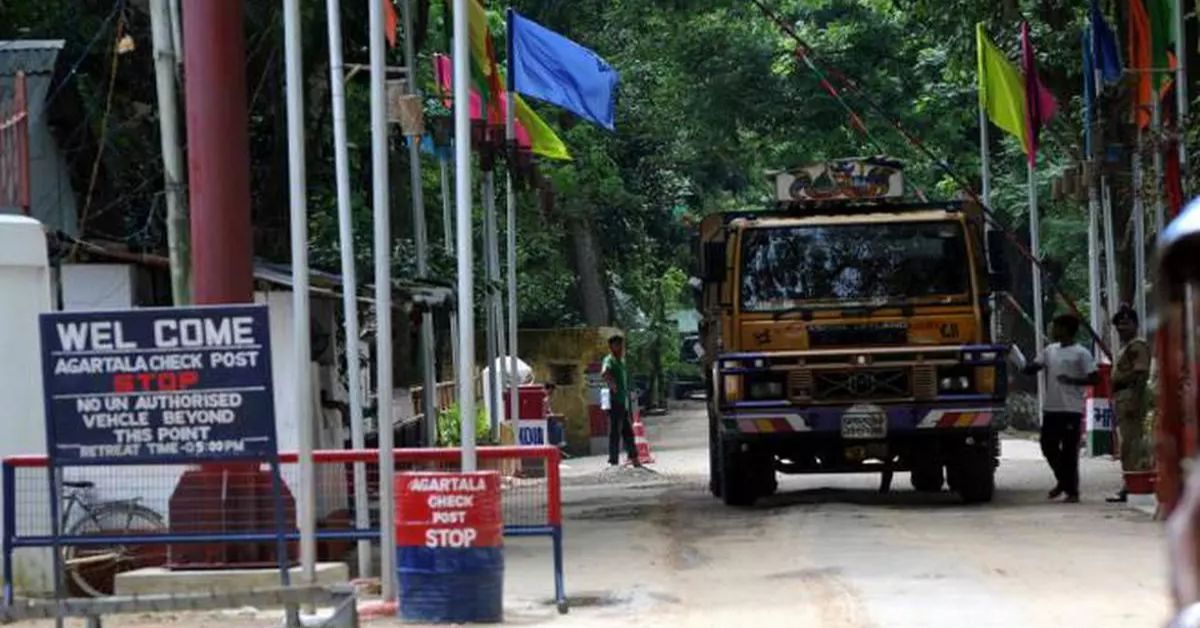Tripura is ranked fourth among Himalayan states in terms of exports to foreign nations, especially Bangladesh.
Patel visited different parts of Sepahijala district and reviewed the progress of development initiatives and centrally-sponsored welfare schemes in the district. Along with sharing an 856-km international border with Bangladesh, Sepahijala district has a Land Customs Station with the neighbouring country at Srimantapur and an inland waterways connectivity port. The Indian union minister hopes to increase trade opportunities with Bangladesh.
She said Tripura, which is surrounded by foreign countries on three sides, has a good scope for bilateral trade development.
Patel said her department has formed a comprehensive strategy to develop bilateral trade in the region. She said further funding for infrastructure development of Border Haats, setting up Special Economic Zones (SEZ), unity malls and land customs stations to facilitate border trade and economic growth would be done.
Meanwhile, India’s Ministry of External Affairs Joint Secretary (Bangladesh and Myanmar) Smita Panth participated in a conference on exploring new trade routes from India’s northeast to the Bay of Bengal via the Bangladesh Transit Agreement.
It focused on boosting historical connectivity between India and Bangladesh with stress on logistical challenges that hinder trade, including high transportation costs.
The joint secretary said the trade volume with Bangladesh reached $18 billion and said efficient connectivity routes like rail and inland water transport are focused on reducing environmental pollution and cost reduction.
She also reviewed the progress of forthcoming connectivity routes with Bangladesh such as the Agartala-Akhaura rail route in West Tripura and said bilateral connectivity projects were given significant financial commitments.








